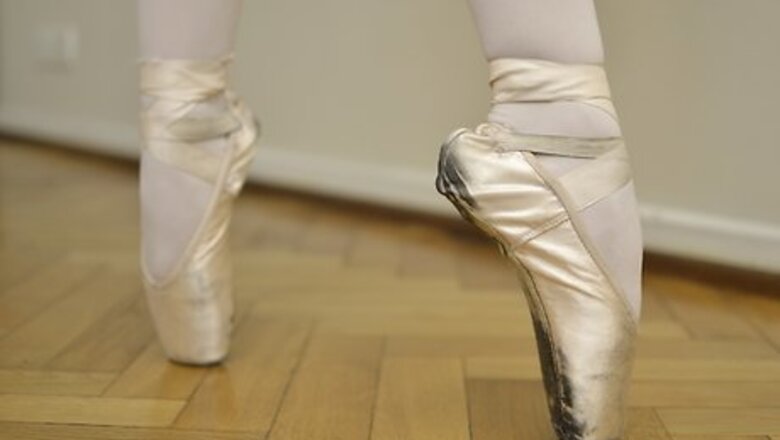
views
Learning Proper Position
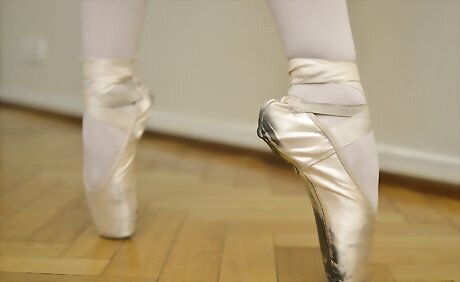
Wear the appropriate footwear. Ballet slippers, jazz shoes, turning shoes, are best for practicing pirouettes. You need something with good range of motion and support. Modern shoes, such as Capezio Foot Undeez or Dance Paws are also appropriate, which cover and support the ball of your foot. They're easy to slip on and great for quick practices. You also need to practice pirouettes in a safe place, clear of any sharp objects or obstacles. It's always preferable to practice in a dance studio under supervision.

Practice your retire position before you turn. Your retire position should be perfect before you begin to turn, making it important that you learn to place your toe correctly and bend your knee appropriately. Place your toe into the notch at the top of the front of your knee, staying careful not to over-cross the foot on the leg. You should feel support under your thigh, when you're positioned properly.

Keep your ribs closed and your shoulders back. Your shoulders should be directly over your hips. Straighten your supporting leg to keep your releve should be as high as possible, imagine yourself stretching up to the sky, and into the ground.
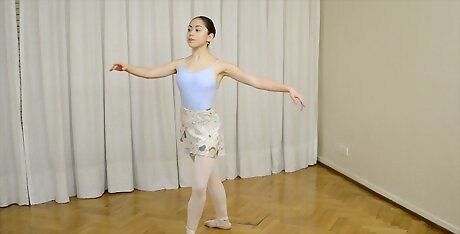
Check your hips. Make sure your hips are not tilted to the back, or otherwise off-kilter. Imagine your hips were a fruit bowl. Would your fruit spill? A tilted pelvis can often lead to incorrect turns and eventually knee and back problems. Make sure you have a strong plie prep but don't stay in your preparation (plie) too long, because then you will lose the momentum, making it difficult to pirouette.

Arrange your feet in fourth position. If you are turning to the right, your left foot will be in front, with your weight evenly distributed between both feet so that you can push off the back foot.
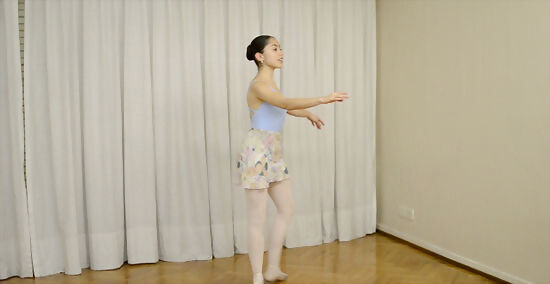
Position your arms. Hold your right arm curved in front of you. Your palm should be facing your body with the elbow gently curved to the side, your arms rounded and out from your body as if holding a beach ball. Your fingers should be about level with the bottom of your rib cage. Keep your shoulder back. Hold the other arm out to the side, palm forward and slightly below the shoulder. Keep the elbow in front of your body.
Executing the Turn

Bend your knees and push off the back leg. You should move into retire position on releve. At the same time, close your left arm into first position and bring the left side of your back around. Make sure, while turning, you keep your hips stacked under your shoulders, there should be no curve in your spine. This will ensure better balance.
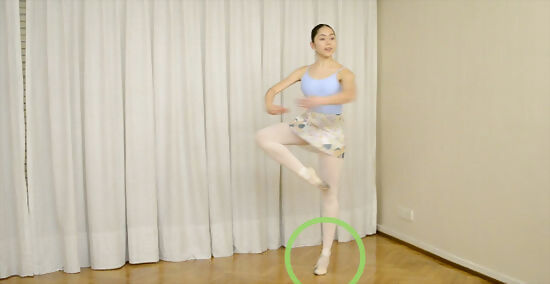
Point the retire foot hard. Imagine you're bringing that retire higher as you turn. This will also keep your center up and balanced. Make sure your foot is still connected to your leg. Keep your supporting leg nice and straight, and don't sickle your feet. Sickling means that you let your ankle slouch and you lose your balance. Also remember to spot, so you don't get dizzy. Don't try double or triple pirouettes if you can't get a single down.
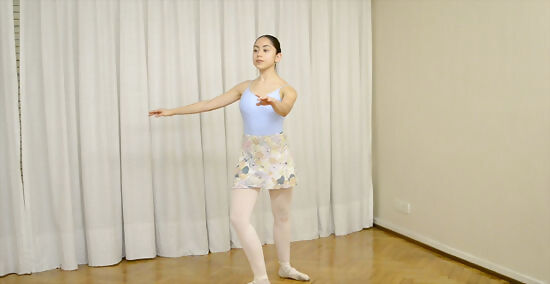
Focus on going up, not around. Imagine someone is pulling you by a string on the top of your head. The turn will come naturally when you learn to go up. Focusing too hard on the spin causes inexperienced ballet dancers to tilt slightly, losing balance. Focus instead on going up and nailing the mechanics of the turn.
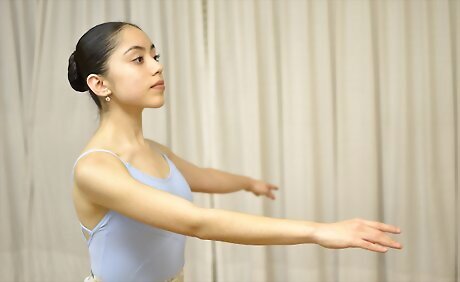
Spot yourself during the turn. As you are turning, look at a spot on the wall level with your eyes and as you rotate, attempt to keep it in sight at all times, you'll have to whip your head around to find it again with each rotation. This is called spotting. Stop and return to fourth position. Your feet should be placed in the same position they were when you started.

Modulate force for number of rotations desired. Before attempting multiple turns, try to balance at the end of a single turn before landing. More force generally equals more rotations, but it is also a timing thing. Too much force will send you careening across the room and you will lose control. Equally, too little power and you'll stop dead in your tracks and fall face first. The proper amount of power comes with experience and you'll soon be able to tell whether you have too much power or not enough. For the first few tries, only attempt a single pirouette to familiarize your body with the feeling and motion. It takes time to work up to a double, triple, or a quad. You may even want to start with only quarter/half turns. If you try doubles/triples right away you will be disappointed.
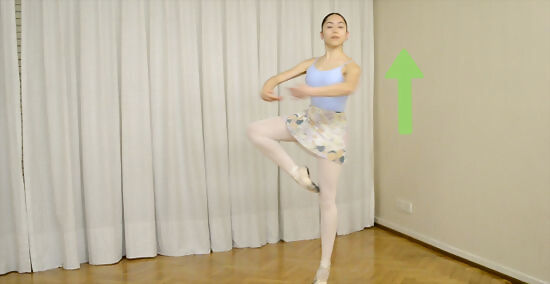
Stick with it. Remember, every ballerina has fallen on a pirouette at least once. Practice makes perfect. It doesn't take long to be able to do a pirouette and once you get the hang of it, it will feel natural.




















Comments
0 comment